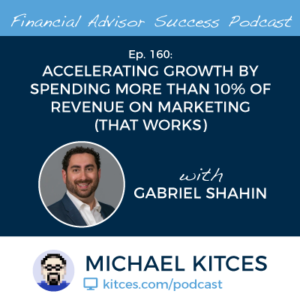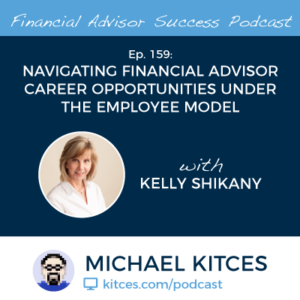Enjoy the current installment of "weekend reading for financial planners" – this week's edition kicks off with the industry news that lawmakers are recommending the Federal Trade Commission investigate Envestnet's Yodlee over its data-sharing practices, raising concerns that the anonymized data they sell might still potentially be pieced back together by data buyers and that Yodlee is not sufficiently disclosing the way it sells data and the risks involved... though notably, Yodlee maintains that it does sufficiently scrub its data before sharing, and the practice is common across more providers than just Yodlee anyway.
Also in the news this week is a profile in Financial Planning magazine of Schwab, and specifically how it pursues advisors in its retail division that want to switch over to form an RIA or join an existing one... raising concerns about whether Schwab is impeding the ability of Schwab's retail advisors to work in the industry if they leave Schwab, or whether independent RIAs are being inappropriately aggressive in pursuing Schwab retail advisors to join their firms and bring their existing Schwab retail clients along (even though RIAs would lambast Schwab if its retail team ever tried to poach RIA clients and assets?).
From there, we have several articles on industry trends, including one analysis that suggests, despite robo-advisor competition, the market for financial planning advice is actually poised to explode to the upside in the 2020s (in large part because the rise of technology is making it so much more efficient to deliver financial advice that it will reduce the cost and expand the market of who advisors can serve), a look at the ongoing slow but steady decline of wirehouse advisor headcount (even as wirehouse advisor productivity hits record highs), and the continued rise of mergers and acquisitions of advisory firms (which hit a new record in 2019, up a whopping 31% from the prior year).
We also have several practice management articles, from a discussion of when it's time to revisit your own fee structure with clients (or not), a discussion of the rising popularity of the subscription-fee model for financial advice and when it works best (or doesn't), the appeal of offering tax-planning services to grow your advisory firm, and the rise of "cash-management" solutions where advisors can offer clients high-yield bank savings accounts to complement their investment/brokerage services.
We wrap up with three interesting articles, all around the theme of personal productivity: the first explores how effectively achieving your goals requires not just setting goals, but prioritizing them to be able to focus and avoid being overwhelmed; the second examines how the real key to productivity is to focus on the 'fundamentals' first (from sleep to nutrition to workspace environment) and your own psychology, rather than fretting about self-control or self-motivation; and the last looks at how the real key to being more productive is not about what else you can manage to do, but what you can stop doing (and especially identifying the things you can stop doing that relieve you of even more otherwise-unnecessary decisions down the road)!
Enjoy the 'light' reading!

 Welcome back to the 160th episode of Financial Advisor Success Podcast!
Welcome back to the 160th episode of Financial Advisor Success Podcast! Welcome back to the 159th episode of Financial Advisor Success Podcast!
Welcome back to the 159th episode of Financial Advisor Success Podcast!
